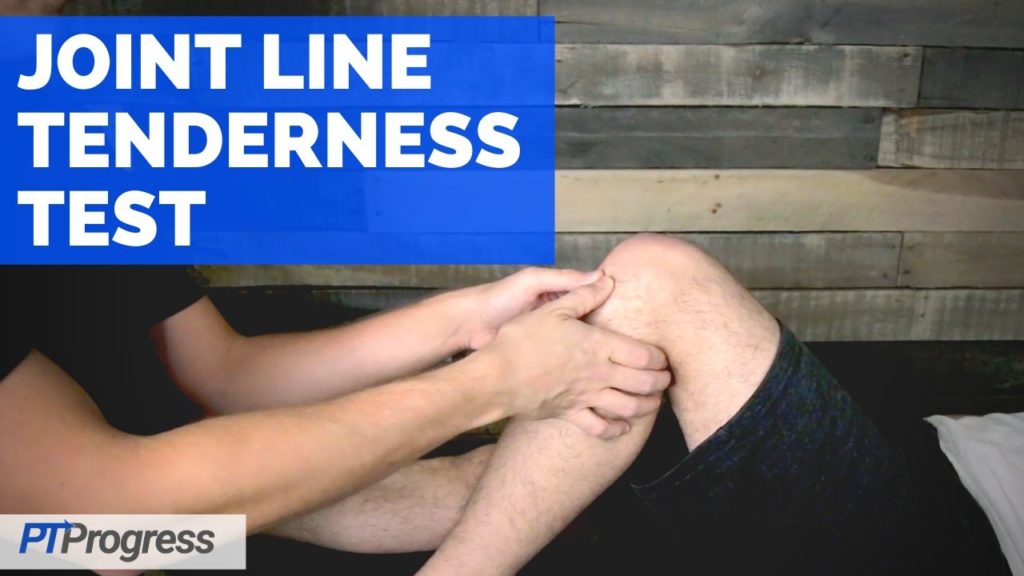
Purpose: The Joint line tenderness test is used to assess the integrity of the medial and lateral meniscus. Meniscal tears are the most common injury to the knee. The joint line tenderness test is commonly used alongside of the McMurray test to identify meniscal injury.
How to Perform Joint Line Tenderness Test
Position of Patient: The patient should be relaxed in the supine position with knee flexed to 90 degrees. The test may also be performed with the patient sitting, knee flexed to 90 degree.
Performance: The examiner will palpate the medial and lateral joint line of the knee. Gently press along the joint line assessing one side at a time.
How to Interpret Joint Line Test
Positive Finding: A positive test occurs when pain or tenderness is noted along the joint line. Pain along the medial side suggests medial meniscus injury and pain along the lateral joint line suggests lateral meniscus injury. Further special tests such as the McMurray test should be performed to confirm possible meniscal injury.
Test Accuracy / Reliability / Evidence:
Sensitivity: 0.64
Specificity: 0.61
Source: Ockert B, Haasters F, Polzer H, et al: [Value of the clinical examination in suspected meniscal injuries. A meta-analysis]. Unfallchirurg 2010; 113: pp. 293-299

